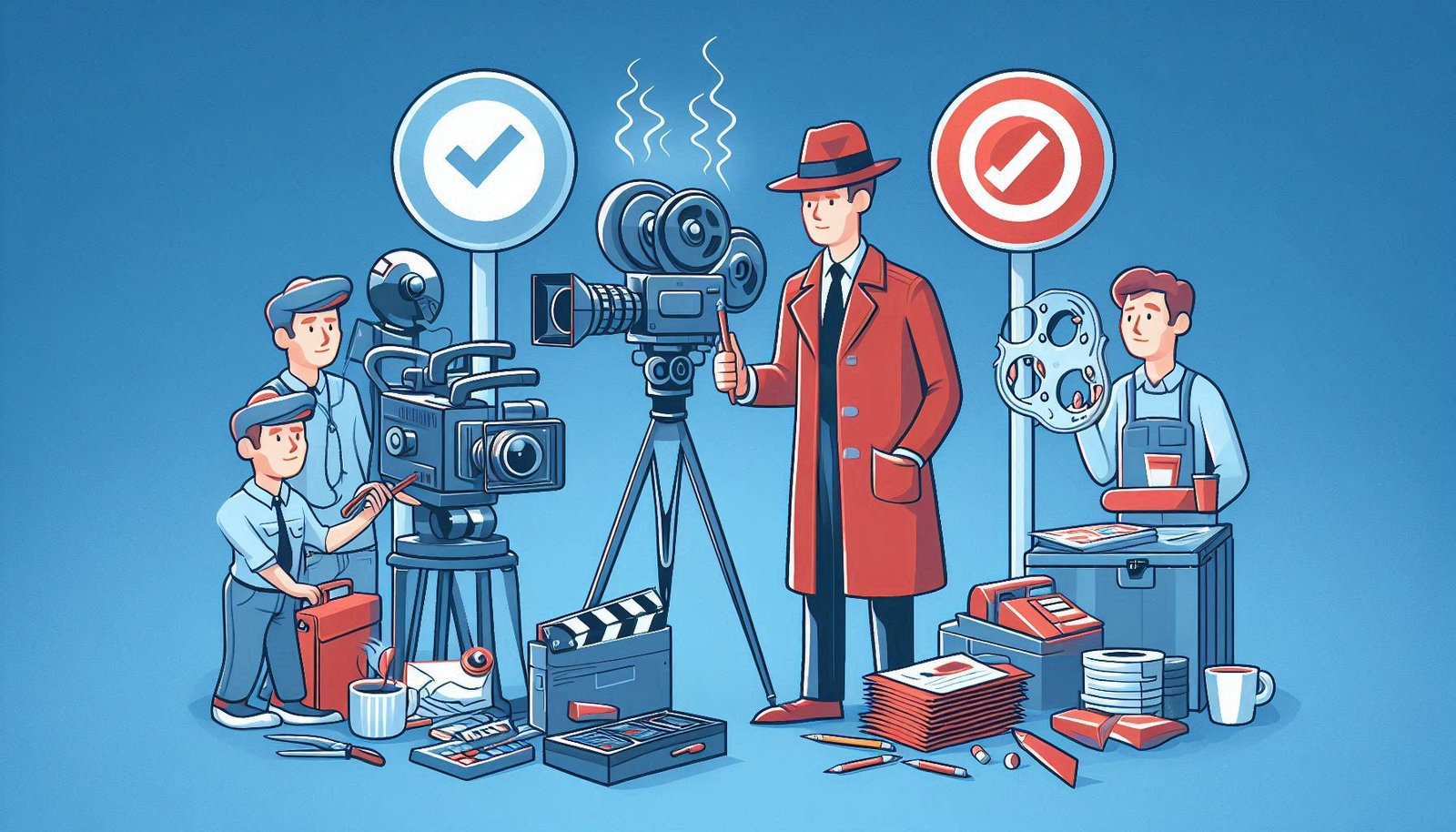
Animated video production has become a vital tool in the marketing, education, and entertainment industries. The ability to convey complex ideas through engaging and visually appealing animations is unmatched. However, one of the most common questions posed by clients and creators alike is: how long does animated video production take? In this comprehensive guide, we’ll explore the various stages of animated video production, factors affecting delivery time, and tips to streamline the process for quicker turnaround without sacrificing quality.
Contents
- 1 Table of Contents
- 1.1 Understanding Animated Video Production
- 1.2 Why Choose Animation?
- 1.3 Pre-Production Phase
- 1.4 Scriptwriting
- 1.5 Storyboarding
- 1.6 Voiceover and Sound Design
- 1.7 Animation Production
- 1.8 Post-Production
- 1.9 Factors Influencing Production Time
- 1.10 Common Challenges and Solutions
- 1.11 Challenge: Meeting Tight Deadlines
- 1.12 Challenge: Maintaining Quality
- 1.13 Challenge: Communication Gaps
- 1.14 Case Studies: Real-World Examples
- 1.15 Case Study 1: Educational Animation
- 1.16 Case Study 2: Marketing Animation
- 1.17 Tips for Faster Delivery
- 1.18 Quality vs. Speed: Pros and Cons
- 1.19 FAQs about Animated Video Production
- 1.20 Conclusion: Balancing Time and Quality
Table of Contents
- Understanding Animated Video Production
- Why Choose Animation?
- Pre-Production Phase
- Scriptwriting
- Storyboarding
- Voiceover and Sound Design
- Animation Production
- Post-Production
- Factors Influencing Production Time
- Common Challenges and Solutions
- Case Studies: Real-World Examples
- Tips for Faster Delivery
- Quality vs. Speed: Pros and Cons
- FAQs about Animated Video Production
- Conclusion: Balancing Time and Quality
Understanding Animated Video Production
Animated video production is the process of creating animated visuals that tell a story or convey a message. This involves several stages, from initial concept and scriptwriting to the final rendering of the animation. The goal is to produce a video that is not only visually appealing but also effective in communicating its intended message.
Why Choose Animation?
Animation offers a unique way to present information. Here are three key reasons why animation is a powerful medium:
- Versatility: Animation can depict anything imaginable, from realistic scenarios to fantastical worlds.
- Engagement: Animated videos are often more engaging than live-action videos due to their colorful and dynamic nature.
- Clarification: Complex ideas can be broken down into simple, understandable visuals.
Pre-Production Phase
The pre-production phase is critical as it sets the foundation for the entire project. This phase includes concept development, scriptwriting, and storyboarding.
Scriptwriting
Scriptwriting is where the magic begins. A well-written script is the backbone of any successful animated video. It outlines the narrative, dialogues, and key messages. An effective script should be concise, clear, and compelling.
Storyboarding
Storyboarding involves creating a visual representation of the script. This step helps in planning the animation sequence and identifying potential issues early on. Each frame of the storyboard represents a key moment in the animation, detailing character actions, camera angles, and transitions.
Voiceover and Sound Design
Voiceover is an essential element, adding a personal touch and aiding in storytelling. Sound design, which includes background music and sound effects, enhances the overall viewing experience, making it more immersive.
Animation Production
The production phase is where the animation itself is created. This involves:
- Character Design: Creating the visual appearance of the characters.
- Background Design: Designing the environments where the action takes place.
- Animation: Bringing characters and backgrounds to life through movement.
This stage requires a significant amount of time and skill, as every movement must be meticulously crafted to ensure fluidity and realism.
Post-Production
Post-production involves editing, adding final touches, and ensuring the video is polished and professional. This stage includes:
- Compositing: Combining all the visual elements.
- Sound Editing: Synchronizing the audio with the animation.
- Rendering: Producing the final video file.
Factors Influencing Production Time
Several factors can affect the time it takes to produce an animated video:
- Complexity of Animation: More detailed and complex animations take longer to create.
- Length of the Video: Longer videos require more work and time.
- Team Size and Expertise: A larger, more experienced team can produce quality work faster.
- Revisions: Multiple rounds of revisions can extend the production timeline.
Common Challenges and Solutions
Challenge: Meeting Tight Deadlines
Solution: Break the project into smaller tasks and prioritize essential elements. Utilize a project management tool to track progress and ensure deadlines are met.
Challenge: Maintaining Quality
Solution: Focus on key elements that impact quality the most, such as script and animation fluidity. Delegate less critical tasks to junior team members to maintain overall standards.
Challenge: Communication Gaps
Solution: Maintain clear and regular communication with the client and team members. Use visual aids like storyboards and animatics to convey ideas effectively.
Case Studies: Real-World Examples
Case Study 1: Educational Animation
A client required a 5-minute educational video explaining a complex scientific concept. By using a clear script and detailed storyboard, the production team delivered the video in 8 weeks, receiving positive feedback for its clarity and engagement.
Case Study 2: Marketing Animation
A tech startup needed a 2-minute explainer video for their new app. Despite a tight 4-week deadline, the team managed to deliver on time by focusing on a simple, clean animation style and effective time management.
Tips for Faster Delivery
- Plan Thoroughly: A well-structured plan can prevent delays.
- Use Templates: Leverage pre-designed templates for recurring elements.
- Automate Tasks: Utilize software tools to automate repetitive tasks.
Quality vs. Speed: Pros and Cons
Pros of Speed:
- Faster time to market.
- Ability to capitalize on current trends.
Cons of Speed:
- Risk of compromising quality.
- Potential for increased revisions and rework.
Pros of Quality:
- Higher client satisfaction.
- Better viewer engagement and retention.
Cons of Quality:
- Longer production times.
- Higher costs.
FAQs about Animated Video Production
How long does it take to produce a 2-minute animated video?
Typically, a 2-minute animated video can take anywhere from 4 to 8 weeks, depending on complexity and available resources.
Can production time be shortened?
Yes, production time can be shortened by streamlining processes, using templates, and maintaining clear communication.
What is the most time-consuming part of animation?
The actual animation process is often the most time-consuming part due to the detailed work required for each frame.
Conclusion: Balancing Time and Quality
Balancing time on delivery and quality is crucial in animated video production. By understanding the production process, anticipating potential challenges, and implementing effective strategies, you can ensure a successful project that meets both deadlines and quality standards.
Investing in thorough planning and clear communication from the outset can significantly reduce production time while maintaining high-quality standards. Whether you’re creating educational content, marketing materials, or entertainment, mastering the balance between speed and quality will set your animated videos apart in a competitive market.




